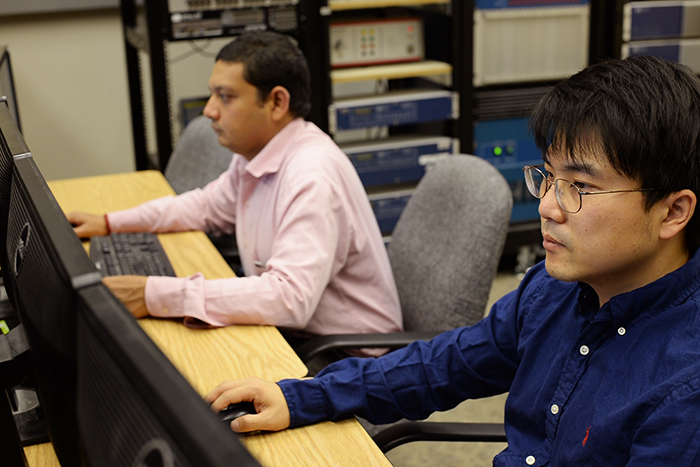WSU to lead international energy project
Partnership between US, India to investigate electricity distribution
July 5, 2017
WSU will lead the U.S. side of a project between American and Indian universities and industry partners to advance the power grids in both countries.
The $30 million project will last five years as researchers develop energy distribution methods to make electricity more reliable and efficient. WSU First Lady Noel Schulz, a professor in the School of Electrical Engineering and Computer Science (EECS), will lead the U.S. team and manage the 15 American partners involved in the project.
“We’re going to bring a very diverse team to the table to look at this project,” she said, “and come up with some very creative solutions.”
WSU researchers and several other laboratories and universities, including Texas A&M University and the Massachusetts Institute of Technology (MIT), will work with energy providers to test their models for new ways of delivering electricity.
Anurag Srivastava, an EECS professor and the U.S. technical leader on the project, likened their vision for the future of the energy sector to a shared economy company, like Airbnb or Uber. As people can increasingly produce and store their own energy through technology like solar panels and batteries, they can supply as well as consume it.
With power grids growing smarter, people will also be able to manage their energy use more precisely and sustainably. Srivastava said consumers will become more connected and aware, allowing them to use power efficiently and save money.
“Things are changing in electric grids,” Srivastava said. “The way we used to operate is not going to work anymore.”
This kind of evolution is more feasible in some places than others, he said. The energy systems they will work with span the U.S., including one in Hawaii, where energy is relatively expensive. Compared to Washington, new energy distribution techniques are more justifiable in Hawaii with its cheaper hydropower, Srivastava said.
Schulz said their goal is to test models across a variety of regions in order to find solutions for the different challenges each region faces. WSU will work with Avista Utilities, which operates across much of Eastern Washington, and the Snohomish County Public Utility District, for a mixture of urban, rural and in-between systems.
“It’s fun that this is not only a WSU project,” Schulz said, “but we’re also going to be doing cool things around the state.”
The Department of Energy (DOE) will provide $7.5 million to the U.S. team, of which WSU will receive $2.8 million. The American partners will match that $7.5 million, with WSU’s share at about $1.8 million. Schulz said this includes graduate student support and faculty academic year release time, and that they are working with the DOE to update the budget.
The kind of system they are investigating could also withstand problems the current power grid cannot, Schulz said. With stored energy, power outages would be less of an issue. However, energy is still far more reliable in the U.S. than in India.
Srivastava, originally from India, spent part of his childhood in an area where they could not be certain of electricity from day to day. He noted that this was especially problematic on hot days, when they could not turn on the air conditioning or a fan to stay cool.
When you flick the switch, he said, “sometimes you get power, sometimes you don’t.” In many places, India is building its power grid from scratch, and therefore anything is an improvement.
The greater challenge in the U.S., with its already robust power grid, will be phasing out old infrastructure to replace it with new technologies, Srivastava said.
Some industries, like transportation or airlines, upgrade more frequently than others. But he said the predominant mentality in the energy sector is “if it’s not broken, don’t fix it,” and the U.S. only sees problems in extreme weather events.
“Until something happens,” Srivastava said, “like a blackout … or we see a big impact of a storm or hurricane on the power grid, they will not do anything.”
Similarly, attitudes toward this new technology vary among Americans. WSU’s team includes a sociologist who will perform surveys to determine how best to encourage the public to support technology like solar panels and batteries.
Schulz said some areas, like the Pacific Northwest, are more tolerant of updating energy systems. She noted there are significant differences between regions, like the East Coast, the Southeast and Texas, but said she hopes all the partners will find advancements that work for their locations.
Some members from both the U.S. and India teams will meet this month at a conference in Chicago to plan for the next five years, and Schulz said the project is expected to begin officially on Sept. 1. She said that within 10 years, the energy sector could make big advances based on their work.
“Things are changing,” Srivastava said, “and we need to get a new solution.”















